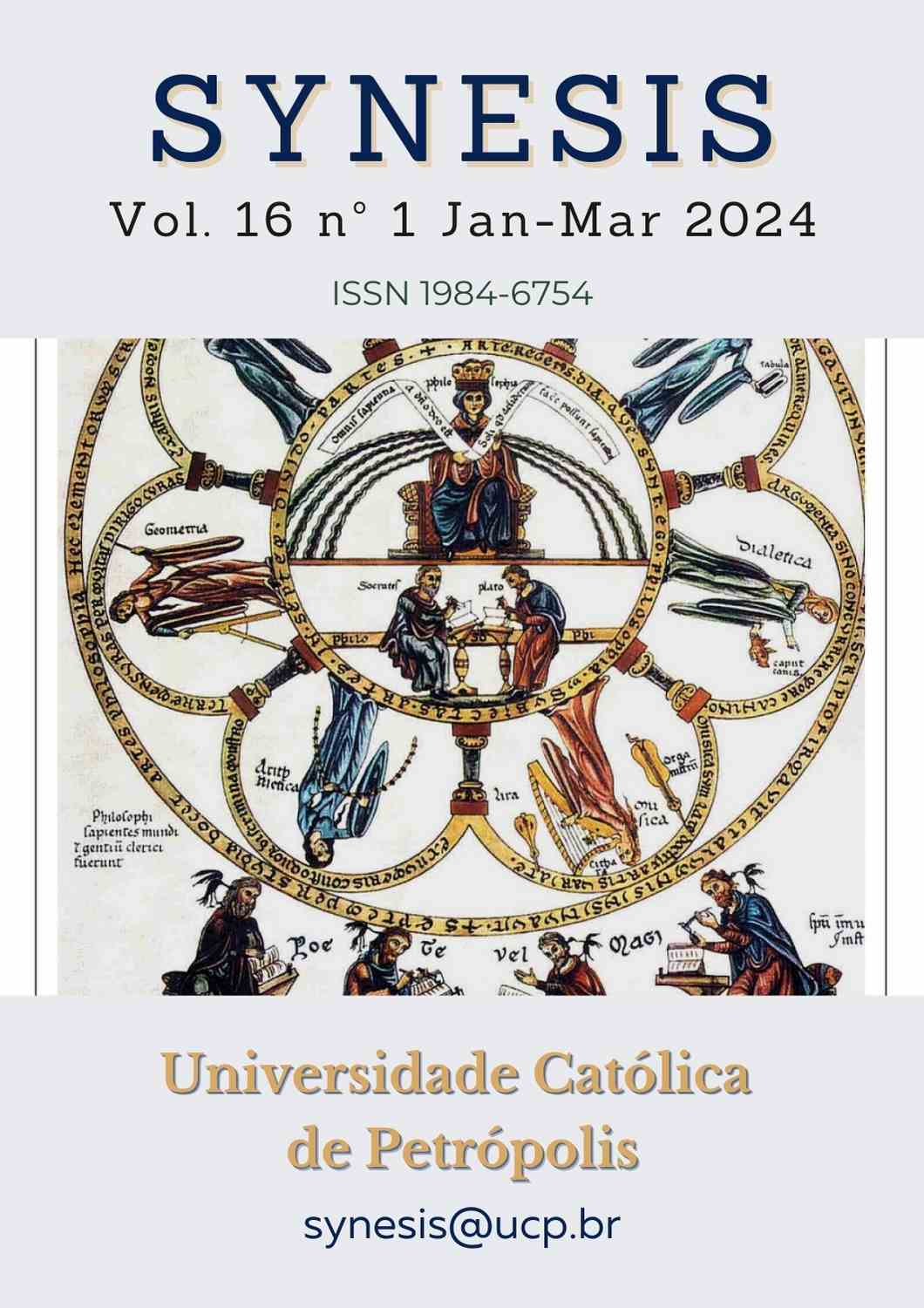Resumo
Este artigo explora os fundamentos históricos da ideia de uma única divindade no Zoroastrismo. Conforme observado no artigo, a ideia de criação e patrocínio no Zoroastrismo continua sendo uma das questões mais difíceis da avestalogia. Zoroastro foi um dos primeiros a introduzir a Causa Primeira, que criou a existência com base no importante potencial do pensamento humano e da possibilidade mental, no domínio da prática da fé de uma forma que pode ser percebida através de símbolos abstratos e do espírito. Primeiro, na história das religiões, é necessário separar a função da criação das visões primitivas, do totemismo, e conectar a ideia de criação com uma natureza divina abstrata. O artigo contém opiniões científicas sobre a necessidade de compreender a função criativa de Ahura Mazda como entidade criativa soberana e unificada. Além disso, "Gohs", incluído no nask "Yasna", o trabalho criativo do Avesta, revelou que no período Zoroastro foi feita uma escolha séria em relação ao politeísmo primitivo e às imagens míticas. Analisa-se que o deus supremo do Zoroastrismo Mazda surge em conexão com o significado Ahura – “alta honra, grandeza, senhor”, que é expressão de sua qualidade, grandeza incomparável. Ahura Mazda e seus anjos partem do fato de que conceitos divinos como Boa Intenção, Mente Perfeita e Boa Posse do Universo são os fundadores de uma única unidade espiritual. Está cientificamente comprovado que as suas funções visam diretamente garantir a vontade de Ahura Mazda e a estabilidade do bem. Com base na análise científica, está provado que Avesta inicialmente descreveu o mundo apenas como uma combinação de virtudes e equilíbrio, e o fundador da religião zoroastriana introduziu na prática fatores puramente espirituais e espirituais, e através deles a ideia de ser " controlado" por forças abstratas.
Referências
Alimova, M., Abdullaeva, M., Tungatova, U., Karimova, D., Alidjanova, L., & Turambetov, N. (2023). Influence of Religious Myth on National and Political Formation across Cultures. Cuestiones Políticas, 41(77).
Asmussen j. iden und begriffe der agrarischen Sphare und ihte bedeutung in der verkundigung Zarathustras.AOF, VII. 1980.
Avesta. Tarixiy - adabiy yodgorlik (in Uzbek). / Trans. by A. Mahkam. (2001). Tashkent, Shark.
Avesta: Book of Videvdot. (2007). Trans: M. Iskhoqov (in Uzbek). Tashkent, TDSHI publishing - printing department.
Avesta: Yasht kitobi (in Uzbek) Book of Yasht/Trans: М.Ishakov . (2001). – Тashkent, Shark.
Drezden, M. (1994). Mifologiya drevnego mira. Razdel Iranskaya mifologiya (in Russian).
Edwards E. Sacrifice (Iranian). – ERE., XI,1920.
Gafurova, I.M. (2020). The Samanids mausoleum as a monument of dynastic architecture of the early middle ages. ISJ Theoretical & Applied Science, 01 (81), 329-334.
Gafurova, Irodaxon (2020) "ROLE OF WAQF PROPERTIES IN THE HISTORY OF TURKESTAN," The Light of Islam: Vol. 2020: Iss. 3, Article 7.
Iskhoqov, M. (2006). From the history of our ancient statehood. // Educational problems, - No. 1. - B. 18-19.
Iskhoqov, M. (2006). Spiritual foundations of our history of statehood. // Educational problems, - No. 1.
Iskhoqov, M. (2021) Avesta: Zardusht Gohlari (interpretations of meaning and hermeneutic interpretations). – Tashkent, 2021
Juraev, N.(2001). Necessity of Avesta. Avesta is a monument of historical literature.Trans: A. Mahkam. – T.: Shark.
Karimova, D., Baitenova, N., Alimova, M., Abdullaeva, M., Ernazarov, O., & Alidjanova, L. (2022). The concept of" Child" and its historical and legal description. Cuestiones Políticas, 40(74).
Karomatov H. (2008). History of modern beliefs in Uzbekistan. Tashkent, JIDU.
Kellens J. (1975). Mythes et conceptions avestiques sous les Sassanides. – MNSN., I.
Lelekov L.A. (1980). Review of the book by M.A. Dandameeva, V.G. Lukonina "Kultura i ekonomika Drevnogo Irana". Moscow.
Masson V.M., Sarianidi V.I. (1982). Terracotta statuettes of Turkmenistan. Moscow.
Meshkeris V. (1964). Terracotta statuettes to the Samarkand Museum. Dushanbe.
Mifologicheskiy slovar (in Russian). (1990). Moscow.
Nosirova Miss, A. R. (2020). Mechanisms of prevention of religious xenophobia and islamophobia. The Light of Islam.
People of Asia and Africa. (1981). Moscow.
Pisani, V. (1948). Aspetti della religione presso gli antichi Indeuropei. Acme I.
Prabhaananda Swami. Gaty Zaratustry. (2004). V kn.: Svyashchennye pisaniya Vostoka. Kratkiy putevoditel (in Russian). Moscow, printing house Sofia.
R.T. Urazova, L.U.Qushmanova. (2009). Zardushtilik ilohiyot tiklanish bosqichlarida Kayoniylar masalasi (The issue of Kayanis in the revival stages of Zoroastrian theology)// Kazaktanu (Kazakhstanu). - Chimkent, No.1 (18).
R.T. Urazova. (2009) Ashi va Ardvi Sura alqovlarining qiyosiy tahliliga doir. // Sharqshunoslik, - № 1-2.
R.T. Urazova. Ameshaspentals und ihre funktionsanalyse in Avesta Asha-Vahishta und Vahu-Mana. Berlin Studies Transnational Journal of Science and Humanities.Vol.2 Issue 1.7. Berlin, 2022. – P. 37-46.
R.T. Urazova. Zoroastrianism. Monograph, 2022. – P. 160.
Ra'no, T. U. (2017). Religious and social thoughts of the people of ancient india, central asia and iran. Himalayan and Central Asian Studies, 21(1), 61.
Rustamovna, N. A. (2022). Religious xenophobia and extremism threats of the xxi century. Intellectual education technological solutions and innovative digital tools, 1(12).
Urazova R.T. (2014). K voprosu ob interpretatsii "Stolknovenia" v Aveste dvukh Dukhov-Bleznetsov. Modern phloxohic paradigms: interrelation of traditions and innovative approaches. Materials of the international scientific conference. Prague.
Urazova, R. (2011) “Avesto”da yovuzlikning universal qiyofasi. (in Uzbek). Tashkent, TIU Ilmiy tahliliy axboroti.
Urazova, R. T. Scientific Analysis of Wicked Expressions in The Avesta. Turkish Online Journal of Qualitative Inquiry (TOJQI) Volume 6, July 2021: 6666 - 6671.
Urazova, R., Sayfullaev, M. (2020). Description Of Divine Images in The Mythology of Avesta. In International Scientific and Current Research Conferences.
Yusupova, N. (2018). SPECIFIC FEATURES OF FAMILY RELATIONS IN ISLAMIC LAW//The article was written for the bulletin “Russia and the Moslem World.”. Russia and the Moslem world, (3 (301)).
Yusupova, N. J. (2018). THE ROLE OF THE FAMILY IN THE SPIRITUAL EDUCATION OF MODERN YOUTH.
Zachner R.C. (1961). The dawn ahd twilight of Zaroastrianizm. New York.

Este trabalho está licenciado sob uma licença Creative Commons Attribution-NonCommercial-NoDerivatives 4.0 International License.
Copyright (c) 2023 Synesis (ISSN 1984-6754)

